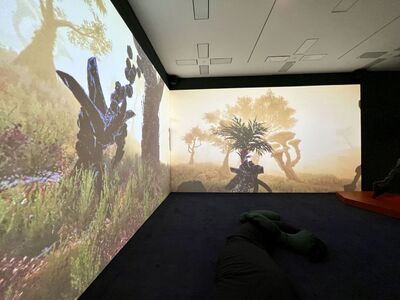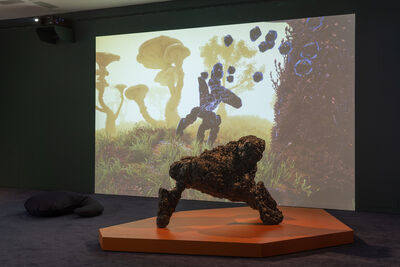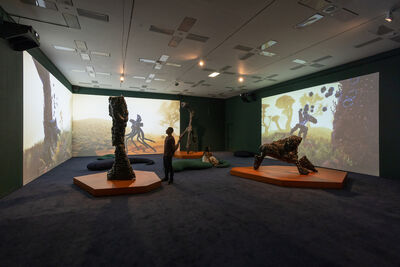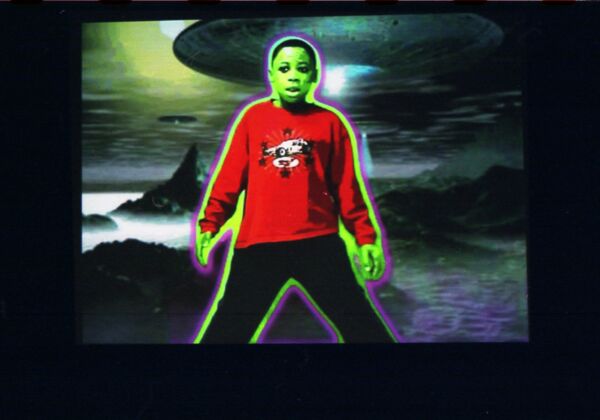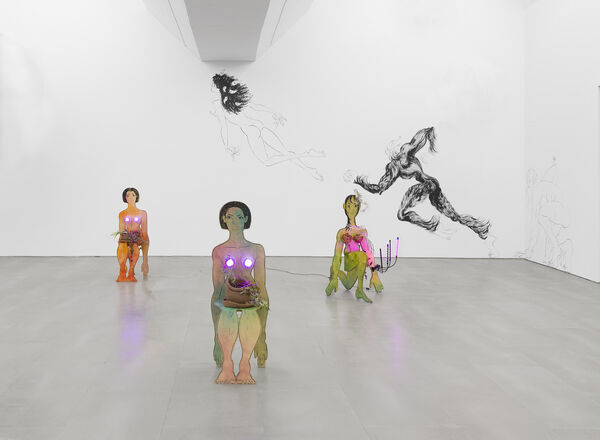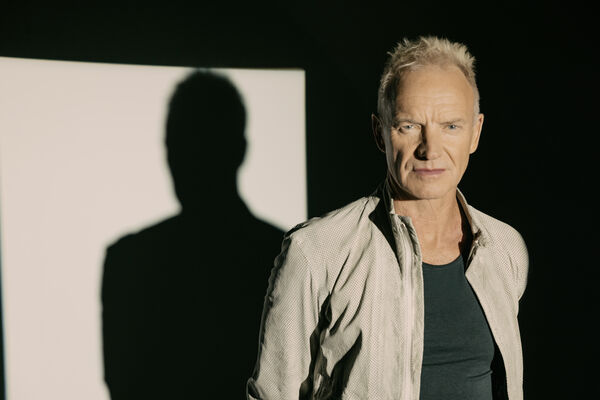David Whetstone meets the man behind Mythmachine
5 Dec 2022
The new attraction at Baltic is billed as “an immersive virtual playground that responds to chaos, luck and chance”. David Whetstone met the man behind Mythmachine
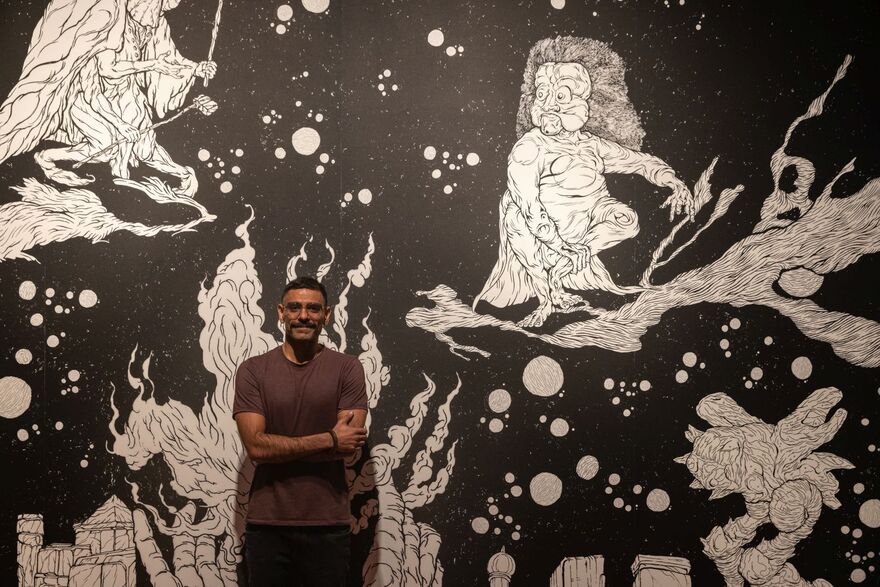
Somewhere in Mumbai – which I’m told is still called Bombay by many Indians - there may be some young men still puzzling over the shrouded figure they met on the skywalk.
Ahead of his Mythmachine installation opening at BALTIC, artist Sahej Rahal recalls with amusement the encounter on one of the city’s elevated walkways.
“I was doing a performance at about 10.30 at night and I’d made this patchwork cloak and was wandering through the space.
“There was a group of young boys, breakdancers, and I realised I was intruding on their practice session.”
He describes a passive aggressive tussle for territory, he with his home-made shroud and self-imposed vow of silence.
“It became fun, a strange sort of dance where I was trying to navigate the space around them.
“It was as if we were communicating with movement.”
That was in 2012. Ten years on, the mysterious skywalk figure is the man tasked with transforming BALTIC’s ground floor space devoted to play.
Until recently it was occupied by Equal Play, the playground installation devised by Albert Potrony which had kids delightedly clambering, balancing and slithering.
Kinnari Saraiya, curatorial fellow at BALTIC, was given the job of finding the artist to follow in Potrony’s footsteps, although this time she wanted something more to do with storytelling than physical play.
Sahej sprang to mind.
“We’d never connected before but I’ve known of his work for a while and I’m from Bombay as well,” she explains.
Contact was made, a studio visit was organised and “it just worked”.
Sahej, who has exhibited around the world but never in the North East, says: “I was excited from the get-go, and especially by the idea of doing something interactive.”
Mythmachine could hardly be less like Potrony’s sunny blue and yellow playground.
You enter a more muted, shadowy environment inhabited by sculptures resembling alien life forms.
Sahej says they were fashioned from odds and ends found in the BALTIC stores and covered with polyurethane foam.
On big screens a 2D version of these tentacled creatures moves seemingly randomly in a landscape not quite of this world.
What makes the creatures move?
Answer: we do – and not by what we do but by the sounds we make.
“The entire space can be thought of as this quasi-sentient musical instrument,” says the artist.
“There are pieces of work (a series of smaller sculptures in an adjoining room) that produce sound when you touch them. Then there are the larger pieces.
“But the central part of it all is an AI (artificial intelligence) programme. It’s sort of alive. You can speak to it.
“It picks up audio feedback and responds with movement.”
The focus is on the large tentacled creature on the screens. On each tentacle is a different AI ‘script’ and each can pick up a sound and change the creature’s movement.
Then as each tentacle touches the digitally created terrain, it triggers an audio file which the artist recorded with Hindustani classical singer Niyah Upadhya.
Sound therefore triggers movement that triggers sound.
Sahej insists it’s not going to result in a discordant racket.
“If multiple limbs land together then it’ll start creating harmonies,” he says.
The process is random and could go on indefinitely. When there’s more than one person in the room, it won’t be clear who’s triggering what.
“I’ve programmed how the creature moves and things like that, but I can’t compute the way it will react.
“I have removed my hand from it in a way. The work lies beyond the extent of what I have programmed it to do and that’s something I’m interested in.”
Sahej, the latest in a long line of international artists to exhibit at BALTIC, was studying to be an engineer – “like every kid in Bombay,” he laughs – before he went to art school and studied painting and drawing.
There he met “this fantastic artist”, Nikhil Chopra, who specialises in performance.
He inspired him to experiment with his own performances in the subways and skywalks that have appeared “like appendages” as the city has developed.
He and friends would dress up and sometimes use flutes called whistling sticks, carried by Indian shepherds to summon spirits to guide them through forests.
You’d imagine anyone encountering them would have been intrigued or perhaps even startled.
“A staple reaction you get in Bombay is people think there’s a film shoot,” says Sahej with a smile. “That’s quite cool.”
Since art school, he says, he has been working on “a kind of strange, mythological world that’s unfolding with each piece”.
An interest in video gaming will be obvious to many who enter his Mythmachine, although there will also be a comic that people can pick up with evidence of his conventional graphic skills.
With the emphasis on gaming and play, you might wonder if there’s a serious side to Sahej’s creations.
“I take play very seriously,” he smiles.
Stories, he says, encompass the overarching narratives governing our lives and “the little lies we tell each other on a daily basis”.
Then there are the games we play that come with rules to be learned and perhaps bent.
“To excel at these games you need to look for the cracks in the system,” he insists. “You have to become the trickster. That’s what I’m interested in.”
Mythmachine, by Sahej Rahal the trickster, opens at Baltic on Saturday, September 24.




